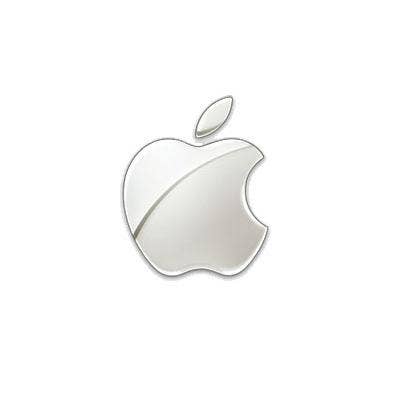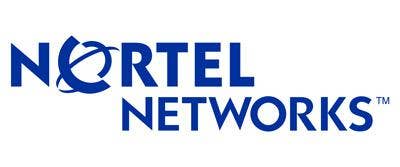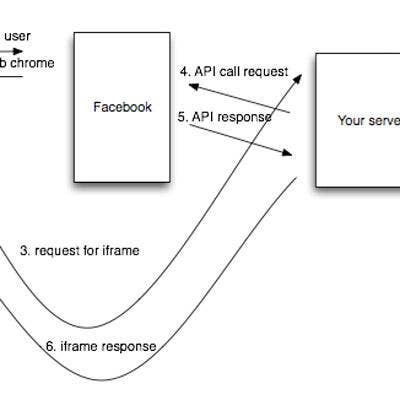Storm's A-Comin': 10 High-Profile Cloud Acquisitions And What They Mean

As cloud computing continues to take hold, the industry will see plenty more mergers and acquisitions. Already, vendors large and small have bulked up their cloud presence by scooping up other companies that fill niche cloud needs. And with hundreds of cloud computing vendors springing up, the orchard is ripe for the picking.
While there are sure to be plenty more acquisitions as the cloud computing ecosystem evolves and vendors eye the cloud as the next big revenue generator, here are 10 noteworthy cloud acquisitions and what they mean.

This week CA continued its push toward all things cloud with the acquisition of cloud platform vendor 3Tera. 3Tera makes AppLogic, a platform to build cloud services and deploy enterprise-class applications to public and private clouds via its user interface. Essentially, AppLogic offers a turnkey cloud platform that enables IT departments, solution providers and service providers to rapidly build and deploy cloud applications.
CA plans to bolster its cloud offerings by tying the 3Tera buy in with its other recent cloud-focused acquisitions. In January, CA scooped up privately held Oblicore, an Israel-based developer of service level management software. Oblicore develops software to improve access to applications running on remote servers, technology critical for businesses as they adopt cloud computing and rely more on IT resources outside their data centers.
The Oblicore buy followed CA's September 2009 acquisition of NetQoS, a network performance management and service delivery software maker that CA snagged for $200 million. And before that, CA bought the technology assets of Cassatt for an undisclosed sum. The June 2009 Cassatt buy included software that helps businesses operate data centers like cloud computing compute utilities.
Adding 3Tera to its growing list of cloud properties gives CA an edge as it aggressively grows its cloud computing portfolio and expands it beyond traditional IT management.

Also this week, Citrix Online, the division of Citrix that offers the cloud-based line of GoTo products, such as GoToMeeting, GoToMyPC and GoToAssist, scooped up IT management SaaS vendor Paglo for an undisclosed sum.
Citrix Online's acquisition of Paglo rounds out Citrix Online's remote support offerings. With Paglo under its belt, Citrix Online will launch a new offering dubbed GoToManage. GoToManage lets MSPs and IT consultants get a unified view of multiple companies' IT infrastructures and offer proactive monitoring and alerting, while also offering remote access, file transfer capabilities and customer branding and reports.
The acquisition also extends Citrix Online's lead in the remote support market, of which IDC estimates Citrix Online owns more than 34 percent. It also gives MSPs a new avenue through which to attack the growing market for SaaS-based IT management, which Forrester Research has said could hit $4 billion by 2013.

This month Iron Mountain acquired e-mail archiving vendor Mimosa Systems in a move that bolsters Iron Mountain's ability to offer archiving, e-Discovery and backup services from the customer premises to the cloud. The $112 million cash deal helps Boston-based Iron Mountain archive and manage data onsite inside the customer firewall and remotely in the cloud, making Iron Mountain a one-stop shop for data capture, archiving and management.
Mimosa will add to Iron Mountain's Total Email Management Suite for archiving e-mail in the cloud. The Mimosa acquisition is the latest move by Iron Mountain to push into the cloud. In 2005, Iron Mountain bought LiveVault, which gave it the ability to offer online data storage backup and recovery. Then, in 2007, it acquired Stratify, to bulk up its e-discovery capabilities.

In a move that targets Microsoft's Outlook and Exchange e-mail applications, VMware in January acquired Zimbra from Yahoo. The Zimbra buy gives VMware a strong, cloud-based open-source collaboration suite.
Zimbra makes the open-source Zimbra Collaboration Suite, which includes applications to coordinate, manage, and share e-mails from multiple vendors, including Microsoft's Outlook, in a single interface; perform group scheduling; and handle desktop and mobile device synchronization.
VMware's Zimbra purchase marked its second cloud-focused purchase. In August 2009, < a href="/software/219100669">VMware scooped up open-source application vendor SpringSource, which helped it round out its vCloud cloud computing technology and SpringSource's platform-as-a-service functionality by adding an integrated portfolio of applications and giving VMware a software-as-a-service offering.

On the surface, IBM's December acquisition of business process management (BPM) software developer Lombardi doesn't look like much of a cloud computing play. But as IBM continues to make strides in the cloud, the Lombardi deal could be the first step toward truly moving business processes into the cloud, an area that is poised for growth and IBM and Lombardi will be on the forefront.
IBM has already noted that cloud computing will be one of its major initiatives and adding Lombardi to the fold could broaden that. IBM has said that BPM tools support processes like product planning, supply chain execution, insurance claims processing, human resource management, procurement and IT services, all of which would fit snugly into cloud offerings.
Also, before the acquisition, Lombardi had launched Blueprint, a SaaS offering that puts BPM in the cloud. Blueprint has since been integrated with IBM's WebSphere Business Modeler.

In July, Hewlett-Packard (HP) acquired IBRIX, a developer of file-serving software that provides data protection, management and availability for high performance and cloud computing environments. The addition of Billerica, Mass.-based IBRIX, which was an HP partner for about three years prior to the acquisition, adds IBRIX's Fusion offering to HP's portfolio.
IBRIX Fusion is a software platform for high performance computing, cloud computing and other demanding storage applications that provides a parallel file system.
As cloud storage continues to take hold, having IBRIX in its arsenal will boost HP's cloud profile.

In a pair of key acquisitions, Web hosting provider Rackspace picked up virtual machine provider Slicehost and online backup service JungleDisk in a bid to help it compete more with Amazon Web Services (AWS). The October 2008 acquisitions have helped Rackspace build out its cloud offerings, in which it just recently launched a Rackspace cloud channel program.
Slicehost offers developers "slices" of Xen-based virtual servers that are cheaper and easier to use than traditional dedicated servers, a direct swipe at Amazon's EC2 offering, while JungleDisk offers filed storage and backup.

Last September EMC sharpened its cloud talons with the purchase of FastScale Technology, a Santa Clara, Calif.-based provider of software platforms for building, optimizing, managing and deploying application environments in physical, virtual and cloud infrastructures. Essentially, the acquisition gives EMC users the ability to move from physical to virtualized data centers or provide clouds.
The buy let EMC focus on boosting performance and scalability for private clouds. It also helped EMC extend its Ionix product line for automating IT management across various segments like storage, computing, network and virtualization resources.
EMC's tie-in of FastScale's flagship Composer Suite added an automated platform for building, optimizing, managing and deploying applications in physical, virtual and cloud infrastructures while also automatically streamlining software stacks.

A year before Oracle acquired Sun, Sun Microsystems picked up Q-layer in January 2009, a Belgian company that Sun added to its cloud computing business unit.
Q-layer made technology that automates the deployment and management of both public and private clouds and lets users quickly provision and deploy applications, which was a key component of Sun's strategy.
Q-layer's NephOS Platform was a complete data center abstraction and modeling platform with extension capabilities and full support for cloud computing services. The NephOS Platform enables CloudApps like the Virtual Private Data Center, which allows users at any skill level to define, provision and manage their own data center without managing hardware. Q-layer supported instant provisioning of services such as servers, storage, bandwidth and applications, enabling users to scale their own environments to meet their specific requirements, according to Sun.
It's still unclear where Sun's Q-layer buy will play in Oracle's plans.

Intalio, which dubs itself "The Enterprise Cloud Company," acquired Webtide in September 2009. Webtide is the team behind the Jetty open source Java application server, used by millions of Web servers, underlying products such as Cisco SESM, Google AppEngine, HP OpenView and IBM Tivoli Netview. Jetty can also be embedded into other open-source products, including Eclipse, Felix, Geronimo, Liferay, Nuxeo and Ubuntu and be used as a standard Java application server by open-source projects for cloud computing.
The purchase of Webtide expands Intalio's enterprise software footprint and makes it a part of the Java-powered Internet fabric.
Intalio added Webtide to consolidate its enterprise cloud computing platform. Jetty's dominance in the Java application server game, its small memory footprint and its asynchronous HTTP server and an asynchronous HTTP client enable it to support scalable implementation of a host of protocols. Jetty can also be imbedded in small and mobile devices.